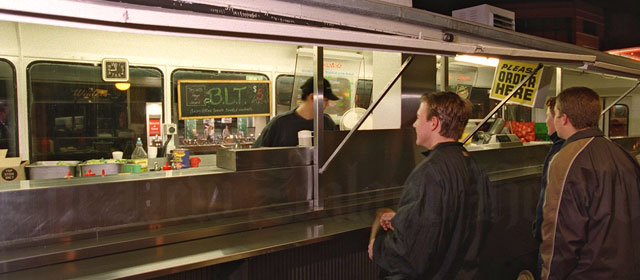Story summary
Street life in the 19th century
In the 19th century city streets were busy and colourful places. Horses and carriages shared them with pedestrians and traders, and they were often used as places to socialise.
Hawkers – people who sell fruit, vegetables, flowers and other goods on the street – and coffee stalls were common in the 1880s.
Other people who were often found on city streets were:
- prostitutes
- vagrants (homeless people) and beggars
- larrikins (delinquent youth) and street gangs
- bootblacks, who polished people’s shoes for money
- buskers (street musicians), who were often disabled
- street orators, who would lecture passers-by about topics such as religion or politics.
The decline of street life
When cars were first introduced in the early 1900s, they had to drive very slowly, so it was safe for pedestrians. However, soon speed limits were raised and people who were walking had to keep to the footpaths. This meant there were fewer places for people to gather and chat on the streets.
Councils began to discourage street traders by restricting where and when they could sell goods. Buskers were also discouraged.
Between 1917 and 1967 pubs closed at 6 p.m. People, particularly men, would drink solidly for an hour after work and then go home, leaving the city streets empty. Most people now lived in the suburbs, rather than in the central city.
The return of street life
From the late 1960s life and bustle began to return to city streets. Some of the reasons for this were:
- Street malls, which were closed to traffic, were opened in several New Zealand cities. The first was Cuba Mall in Wellington, in 1969.
- Inner-city apartments became popular.
- Cafés and bars were allowed to have tables on the footpath and stay open later. Coffee carts returned, and became popular with urban coffee drinkers.
- Many cities introduced street festivals and carnivals.
- Urban designers made city spaces more attractive to pedestrians.





